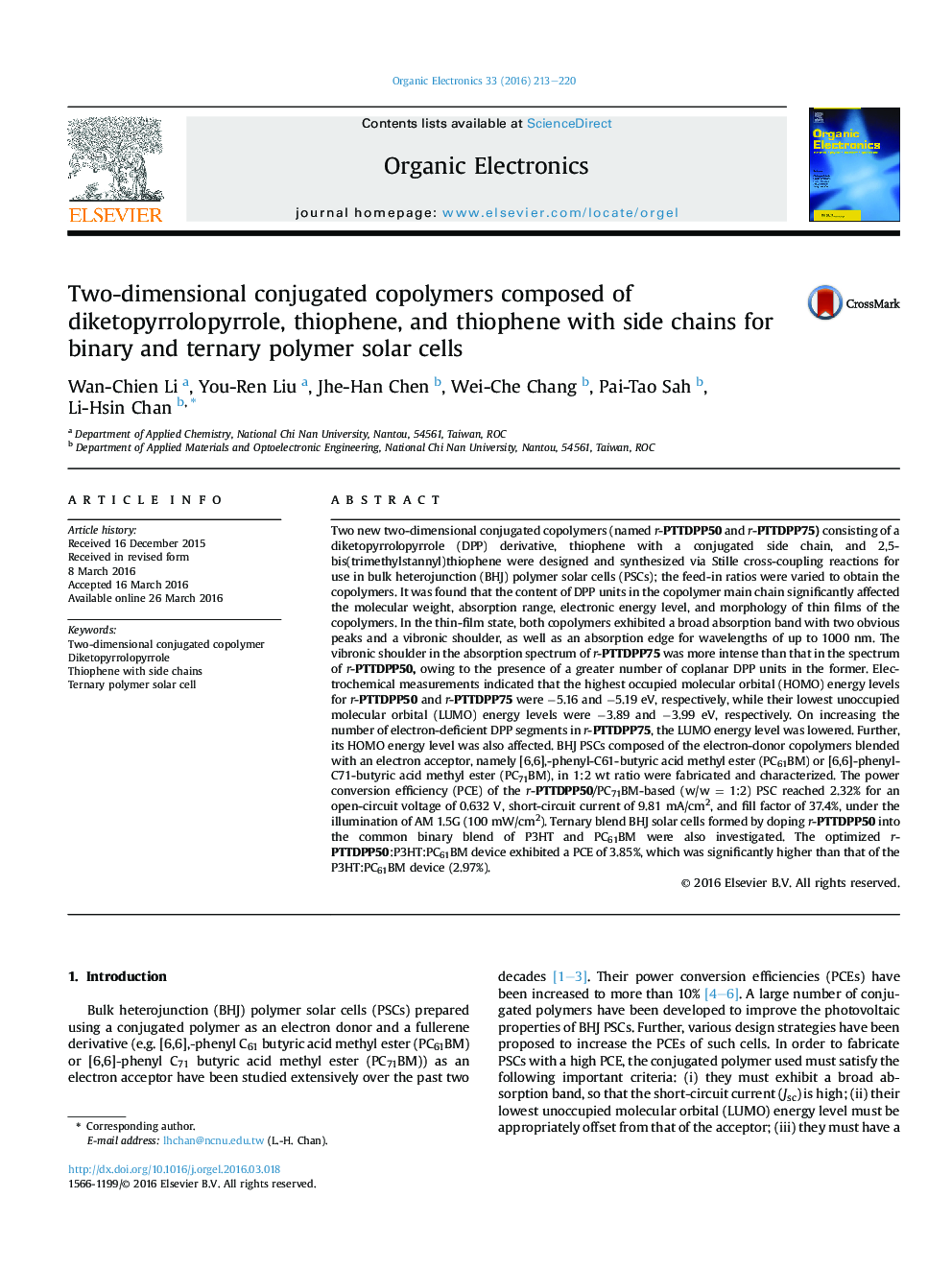| Article ID | Journal | Published Year | Pages | File Type |
|---|---|---|---|---|
| 1264234 | Organic Electronics | 2016 | 8 Pages |
•This work provides a feasible synthesis route to construct a series of 2D low-bandgap materials with broad absorptions.•A broad absorption spectrum and a relative low LUMO energy level were obtained by increasing the number of DPP units.•The best ternary blend device had a PCE of 3.85%, this was a 30% improvement over the P3HT:PC61BM binary blend device.
Two new two-dimensional conjugated copolymers (named r-PTTDPP50 and r-PTTDPP75) consisting of a diketopyrrolopyrrole (DPP) derivative, thiophene with a conjugated side chain, and 2,5-bis(trimethylstannyl)thiophene were designed and synthesized via Stille cross-coupling reactions for use in bulk heterojunction (BHJ) polymer solar cells (PSCs); the feed-in ratios were varied to obtain the copolymers. It was found that the content of DPP units in the copolymer main chain significantly affected the molecular weight, absorption range, electronic energy level, and morphology of thin films of the copolymers. In the thin-film state, both copolymers exhibited a broad absorption band with two obvious peaks and a vibronic shoulder, as well as an absorption edge for wavelengths of up to 1000 nm. The vibronic shoulder in the absorption spectrum of r-PTTDPP75 was more intense than that in the spectrum of r-PTTDPP50, owing to the presence of a greater number of coplanar DPP units in the former. Electrochemical measurements indicated that the highest occupied molecular orbital (HOMO) energy levels for r-PTTDPP50 and r-PTTDPP75 were −5.16 and −5.19 eV, respectively, while their lowest unoccupied molecular orbital (LUMO) energy levels were −3.89 and −3.99 eV, respectively. On increasing the number of electron-deficient DPP segments in r-PTTDPP75, the LUMO energy level was lowered. Further, its HOMO energy level was also affected. BHJ PSCs composed of the electron-donor copolymers blended with an electron acceptor, namely [6,6],-phenyl-C61-butyric acid methyl ester (PC61BM) or [6,6]-phenyl-C71-butyric acid methyl ester (PC71BM), in 1:2 wt ratio were fabricated and characterized. The power conversion efficiency (PCE) of the r-PTTDPP50/PC71BM-based (w/w = 1:2) PSC reached 2.32% for an open-circuit voltage of 0.632 V, short-circuit current of 9.81 mA/cm2, and fill factor of 37.4%, under the illumination of AM 1.5G (100 mW/cm2). Ternary blend BHJ solar cells formed by doping r-PTTDPP50 into the common binary blend of P3HT and PC61BM were also investigated. The optimized r-PTTDPP50:P3HT:PC61BM device exhibited a PCE of 3.85%, which was significantly higher than that of the P3HT:PC61BM device (2.97%).
Graphical abstractFigure optionsDownload full-size imageDownload as PowerPoint slide
